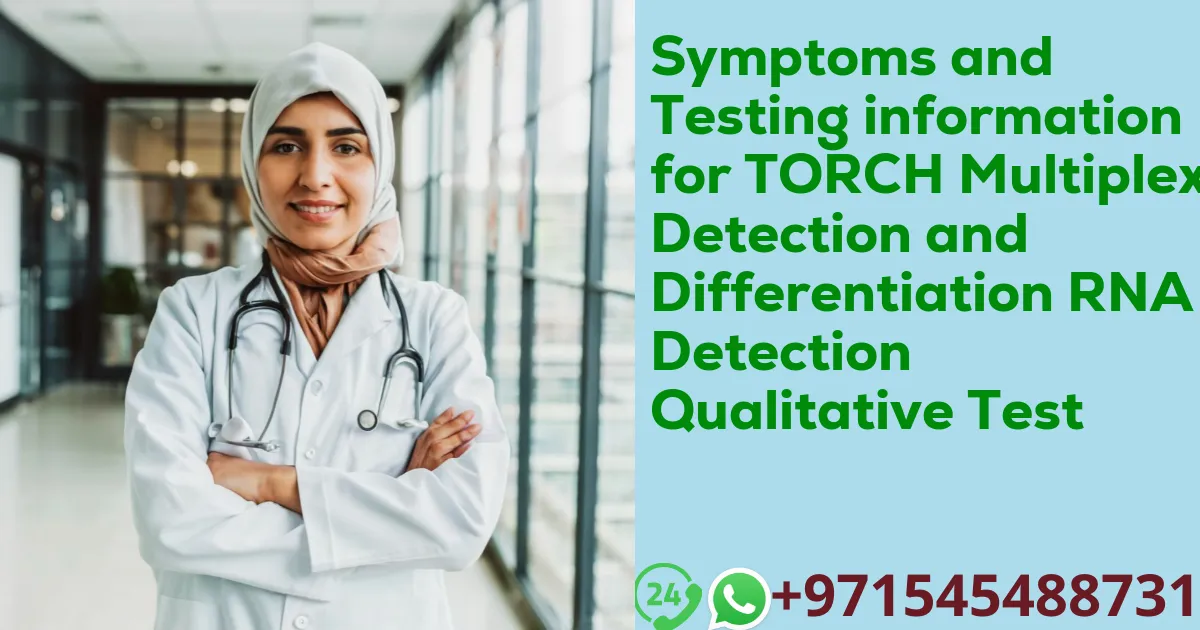The TORCH Multiplex Detection and Differentiation RNA Detection Qualitative Test is a comprehensive diagnostic tool designed to detect and differentiate between infections caused by Toxoplasma gondii, Rubella virus, Cytomegalovirus (CMV), and Herpes Simplex Virus (HSV) 1 and 2. These pathogens are collectively known as TORCH, an acronym derived from the first letter of each organism. The significance of this test lies in its ability to identify infections that may cause congenital anomalies or severe illnesses in neonates and infants, as well as in immunocompromised individuals. Understanding the symptoms that prompt the use of the TORCH Multiplex Detection Test is crucial for early detection and management of these infections.
Symptoms Prompting TORCH Multiplex Detection
Infections caused by the TORCH pathogens can present with a variety of symptoms, depending on the specific pathogen and the infected individual’s immune status. Some of the common symptoms that may indicate the need for a TORCH Multiplex Detection Test include:
- Fever and Fatigue: Non-specific but common symptoms that can be associated with any of the TORCH infections.
- Rash: A rash is often observed in cases of Rubella and can also be seen in some Herpes Simplex Virus infections.
- Jaundice: This symptom is particularly common in newborns infected with Cytomegalovirus.
- Microcephaly or Other Neurological Abnormalities: These symptoms can be indicative of Toxoplasma gondii or Cytomegalovirus infections.
- Low Birth Weight or Growth Retardation: These symptoms may suggest an infection with any TORCH pathogen during pregnancy.
- Eye Abnormalities: Such as chorioretinitis, which can occur with Toxoplasma gondii infections.
It is important to note that these symptoms can overlap with those of other diseases, making accurate diagnosis through the TORCH Multiplex Detection Test essential for appropriate treatment.
Understanding the Test
The TORCH Multiplex Detection and Differentiation RNA Detection Qualitative Test employs advanced molecular techniques to qualitatively detect the RNA of the aforementioned pathogens. This RNA detection is pivotal as it allows for the identification of active infections, which is crucial for timely intervention. The test is performed on a sample obtained from the patient, typically a blood sample, although other types may be used depending on the clinical scenario.
Test Cost and Availability
The cost of the TORCH Multiplex Detection Test is set at 2210 AED. This investment in health allows for the early detection and differentiation of these significant infections, guiding healthcare providers in implementing the most effective treatment strategies. To access this test or for more information, individuals and healthcare providers can visit DNA Labs UAE.
Conclusion
Early detection and differentiation of infections caused by the TORCH pathogens are critical for preventing and managing potential complications in neonates, infants, and immunocompromised individuals. The symptoms of these infections can be varied and nonspecific, making the TORCH Multiplex Detection and Differentiation RNA Detection Qualitative Test a valuable diagnostic tool. With a cost of 2210 AED, this test provides a means for healthcare providers to accurately identify these infections, enabling timely and appropriate interventions. For further details or to schedule a test, please visit DNA Labs UAE.



